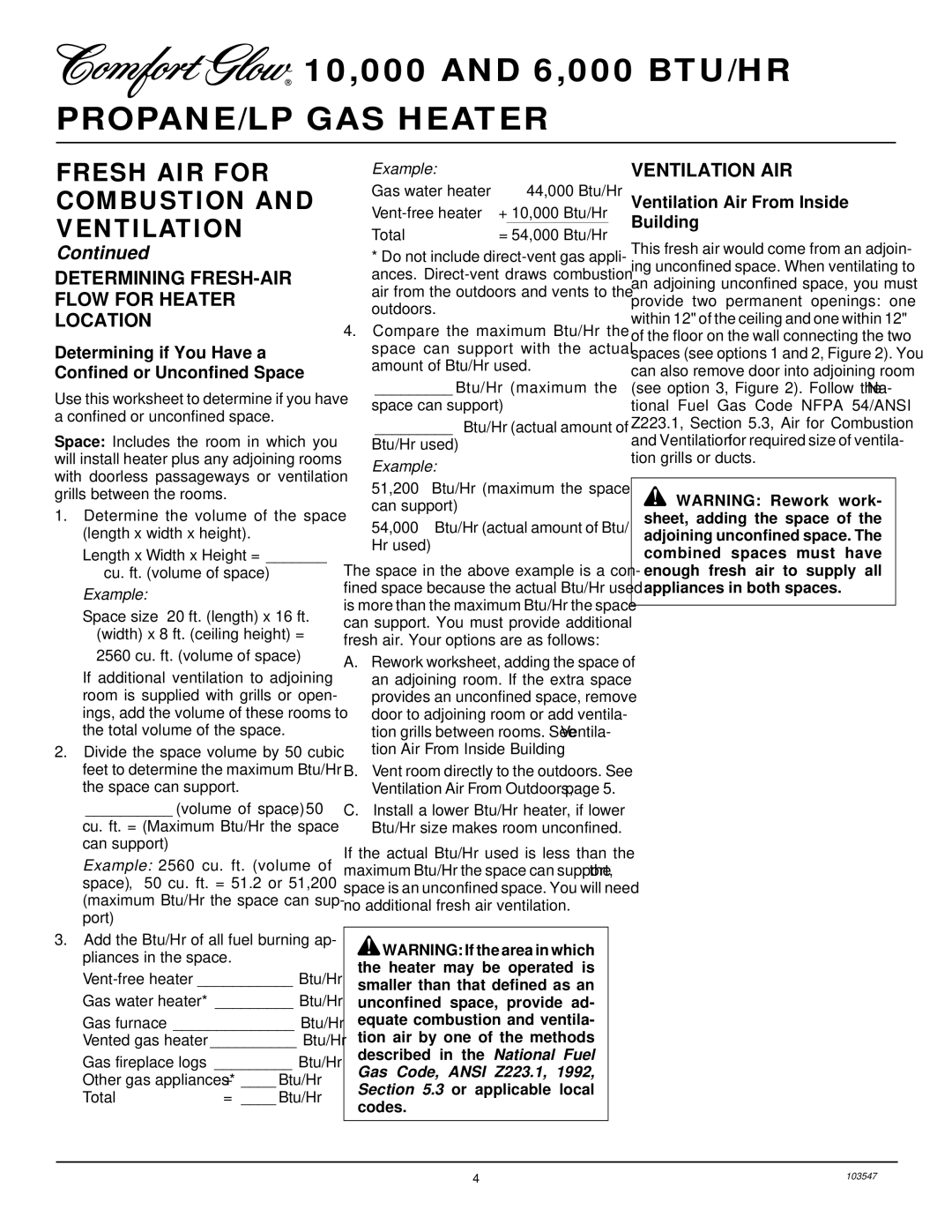CGP10L, CGP6L specifications
Desa's CGP10L and CGP6L are two innovative gas-powered heating solutions designed for both residential and commercial applications. These models highlight an impressive combination of efficiency, convenience, and modern technology tailored to meet diverse heating needs.The CGP10L is a robust heater with a capacity of 10,000 BTUs, making it an ideal choice for larger spaces or areas requiring extensive heating. In contrast, the CGP6L offers a slightly lower output of 6,000 BTUs, perfect for smaller rooms or as supplemental heating in larger environments. Both models are designed to deliver reliable warmth while maintaining energy efficiency, which is crucial for cost-effective household management.
One of the standout features of the CGP10L and CGP6L is the use of advanced infrared technology. This technology allows for quick and efficient heating by warming objects and people directly rather than merely heating the air. As a result, users can experience immediate comfort without the typical waiting times associated with traditional heating systems.
In terms of design, both models feature a compact and lightweight construction, enabling easy portability. This is particularly beneficial for users who may want to move their heater from room to room or even take it outdoors. The built-in safety features, such as automatic shut-off functions and tip-over protection, enhance the safety profile of these units, making them suitable for various living conditions.
Moreover, Desa has incorporated user-friendly controls in both models, allowing users to adjust the heat output according to their comfort preferences. The straightforward operation ensures that even those who are not technically inclined can benefit from these powerful heating systems.
The fuel efficiency of the CGP10L and CGP6L is another attractive characteristic, as both models are designed to minimize gas consumption while maximizing heat output. This not only contributes to lower utility bills but also aligns with eco-friendly practices.
In conclusion, Desa's CGP10L and CGP6L heaters stand out in the market due to their modern technology, efficiency, portability, and safety features. Whether for residential or commercial use, these models provide a reliable heating solution tailored to meet the varying demands of consumers.

